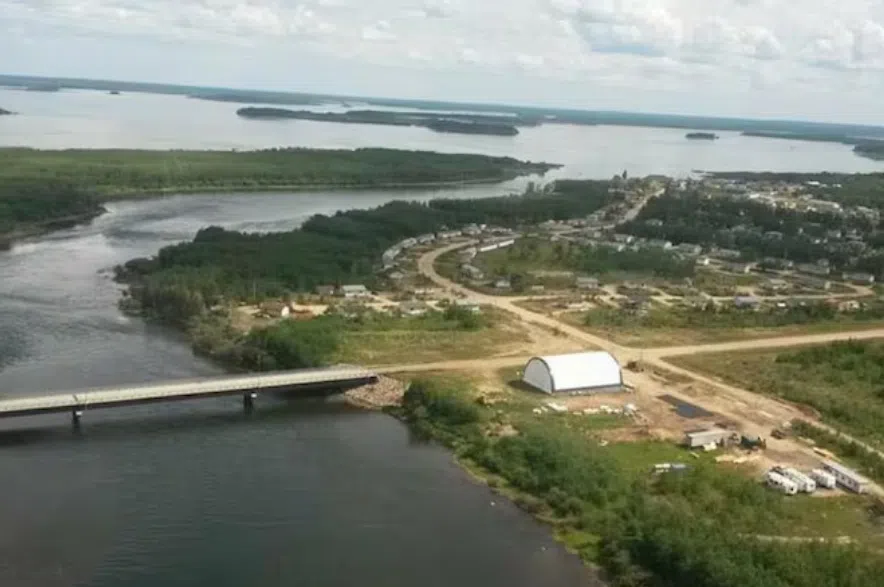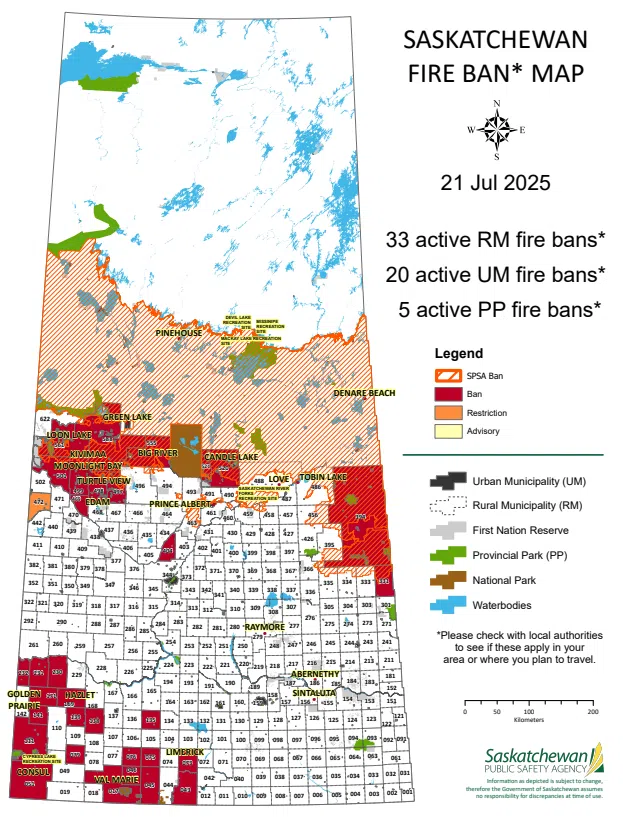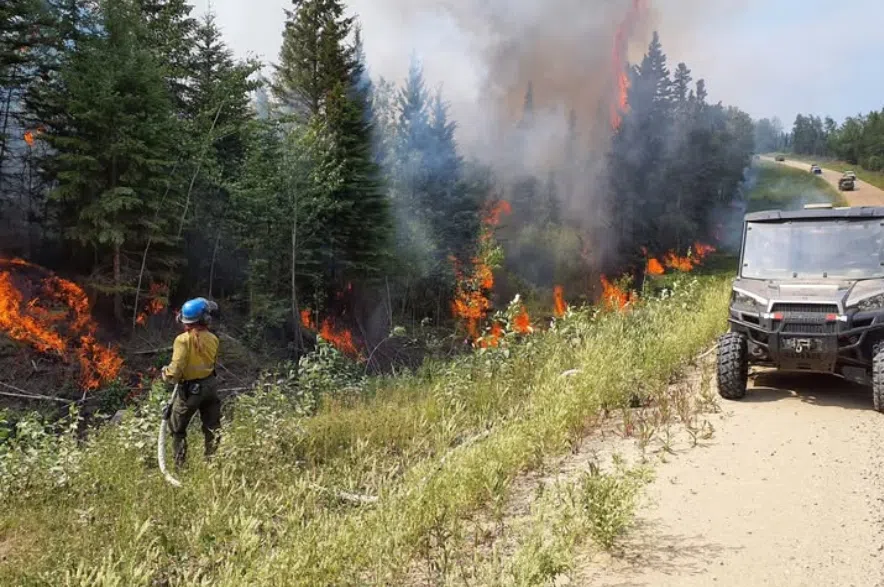While parts of the province were flooded this weekend, the rain didn’t do a lot for the wildfire situation in Saskatchewan.
Saskatchewan Public Safety Agency (SPSA) Vice-President Steve Roberts said most of the rain either fell south or north of the biggest blazes.
Read more:
- Muskeg Fire spreads, closing Highway 155 to non-essential travel: SPSA
- Buhl Fire holds steady near Prince Albert National Park as crews gain ground
“The areas that we have these large fires that we’re working on right now did not receive substantive precipitation,” he said.
The small amount of rain that did fall brought some humidity, Roberts added, and that helped to calm things down.
“The fires have been a little more sedate, and we’ve been able to make more progress,” Roberts said.
With only a day of rain, Roberts said there’s no plans to lift a provincial fire ban, first put on place on May 9 and then lifted on June 16 before being reinstated on July 10.
Roberts said the ban is in place because of the number of human-caused fires in the first half of the season.
“Almost all of our fires were caused by individuals, either through poor burning practices, (or) through things like quadding by campfires that weren’t properly extinguished,” Roberts said, noting that some people had been charged.
That’s changed since the beginning of July, with lightning becoming the major cause of fires, but SPSA President Marlo Pritchard said there’s still an extreme fire risk stretching from the provincial forest boundary up to Churchill River.
Until there’s more rain or conditions change Roberts said the fire ban — which prohibits open fires, controlled burns, and fireworks — will stay in place.

English River First Nation has seen 500 people evacuated because of the fires. (English River First Nation/Facebook)
Number of evacuees continues to grow
While the SPSA reported 1,700 wildfire evacuees last week, that number has since jumped to 2,800.
“It has increased because we refined some of the numbers of people actually out of their communities,” Roberts said.
He said that the new figure now accounts for 20 people from the northern hamlet of Cole Bay, 112 from Île-à-la-Crosse, and 500 from Patuanak’s English River First Nation.
With eight communities under evacuation order, Roberts said some people, like those from Île-à-la-Crosse, are leaving strictly because of the smoke.
That figure of 2,800 is actually higher, Roberts said, because it doesn’t account for evacuees from La Loche, where evacuation is voluntary and those with health risks are being moved to avoid the smoke.

Fire bans on July 21, 2025 (Saskatchewan Public Safety Agency)
Fires in Saskatchewan on July 21
As of 5:30 p.m. on Monday, 50 active wildfires burned in Saskatchewan.
Fourteen of those blazes were not contained, with another 17 under ongoing assessment and firefighters were protecting values in another 17. Two fires were considered contained.
Contained means suppression action is taking place and the fire is not expected to grow in size, ongoing assessment means the fire is being monitored regularly to assess risk to values in the area and not contained means suppression action is taking place but the fire is expected to grow in size, according to SPSA. Protecting values means a fire is active and action is focused on protecting things like cabins and infrastructure.
Notable fires not contained included the Shoe Fire near Lower Fishing Lake, Pisew Fire west of La Ronge, the Wolf Fire west of Denare Beach, the Ditch Fire north of Weyakwin, the Muskeg Fire north of La Plonge Indian Reserve and Beauval, the Buhl Fire West of Weyakwin and the Trail Fire west of Beauval.
By far the biggest of those is the Shoe Fire, which was first reported on May 7 and on Monday was listed as 554,667 ha, or just over 1,370,612 acres, which is arounf 10 times the size of the entire City of Saskatoon area.
As well as the provincial ban, fire bans are active in 20 urban municipalities, 33 rural municipalities and five provincial parks in the province.
So far this year there have been 384 wildfires in Saskatchewan. The five-year average is 309.
— with files from CJME News
Read more:











